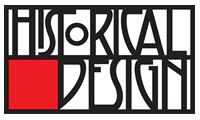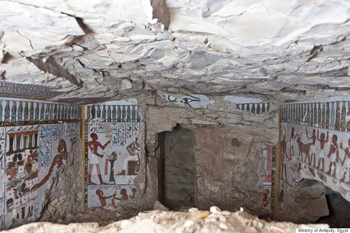Product Description
Emile Galle “Egyptian Coin” handled dish c. 1881


EMILE GALLÉ (1846-1904) France
“Egyptian Coin” handled dish c. 1881
Handpainted faience in barbotine, glazed polychrome decoration beneath transparent glaze, gold highlights
Marks: stamped in black: E. Gallé, nancy depose, E G with cross of Lorraine
Designs for other Egyptian decoration illustrated: Les dessins de Gallé, Philippe Thiébaut (Paris: Réunion des musées nationaux, 1993) p. 98-99
Related forms and designs illustrated: La Ceramique de Gallé (Nancy: Musée de l’Ecole de Nancy, 1984) p. 119; Egyptomania: Egypt in Western Art, 1730-1930 (Paris: Éditions de la Réunion des Musées Nationaux and Ottawa: National Gallery of Canada, 1994), pp. 472=74.
H: 7″ x L: 12″ x W: 8″
Emile Galle “Egyptian Coin” handled dish c. 1881
ITALIAN MAJOLICA
Pair of “Rose” wall pockets c. 1885
Three dimensional realistically rendered pink roses with leaf and stems all in the Barbotine technique
Marks: Made in Italy
Barbotine is the French term for ceramic slip or a mixture of clay and water for molding or decorating pottery. This technique was used to create applied adornments on 19th century majolica items.
H: 13″ x W: 7 1/4″ x D: 4 1/4″
CHRISTOPHER DRESSER (1834-1904) UK
JAMES DIXON & SONS Sheffield, England
“Gothic Arch” toast rack c.1881
Silver-plate
Marks: JD&S (stamped), EP, #72, “D”
Drawing illustrated: Christopher Dresser’s 1881 design and account book
For more information see: Truth, Beauty, Power: Dr. Christopher Dresser 1834-1904, exhib. cat. Historical Design, Inc. (New York, 1998); Charles Handley-Read, “High Victorian Design: An Illustrated Commentary” in ‘Design 1860-1960’ sixth conference report of the Victorian Society (London, 1968); Victorian and Edwardian Decorative Art: The Handley-Read Collection, ed. Simon Jervis (London: Diploma Galleries,1972); Christopher Dresser: pottery, glass, metalwork, (London: The Fine Arts Society Ltd., 1972); Isabelle Anscombe & Charlotte Gere, Arts & Crafts in Britain and America (New York: Rizzoli International Publications, Inc., 1978); Truth, Beauty and Design, Victorian, Edwardian and later Decorative Art (London: Fischer Fine Art Limited),; A Thing of Beauty: Art Nouveau, Art Deco, Arts & Crafts Movement and Aesthetic Movement Objects in Atlanta Collections (Atlanta, GA: The High Museum of Art, 1980), cat. no. M2; Widar Halén, Christopher Dresser (Oxford: Phaidon, 1990),; Judy Rudoe, Decorative Arts 1850-1950: A Catalogue of the British Museum Collection (London: Trustees of the British Museum, 1991),; Gerda Breuer, Von Morris bis Mackintosh – Reformbewegung zwischen Kunstgewerbe und Sozialutopie, Arts and Crafts (Darmstadt: Institut Mathildenhöhe, 1994/95); “The Silver Designs of Dr. Christopher Dresser,” Shirley Bury, Apollo (December, 1962)
H: 6″ x D: 4 1/8″ x W: 4 5/8″
